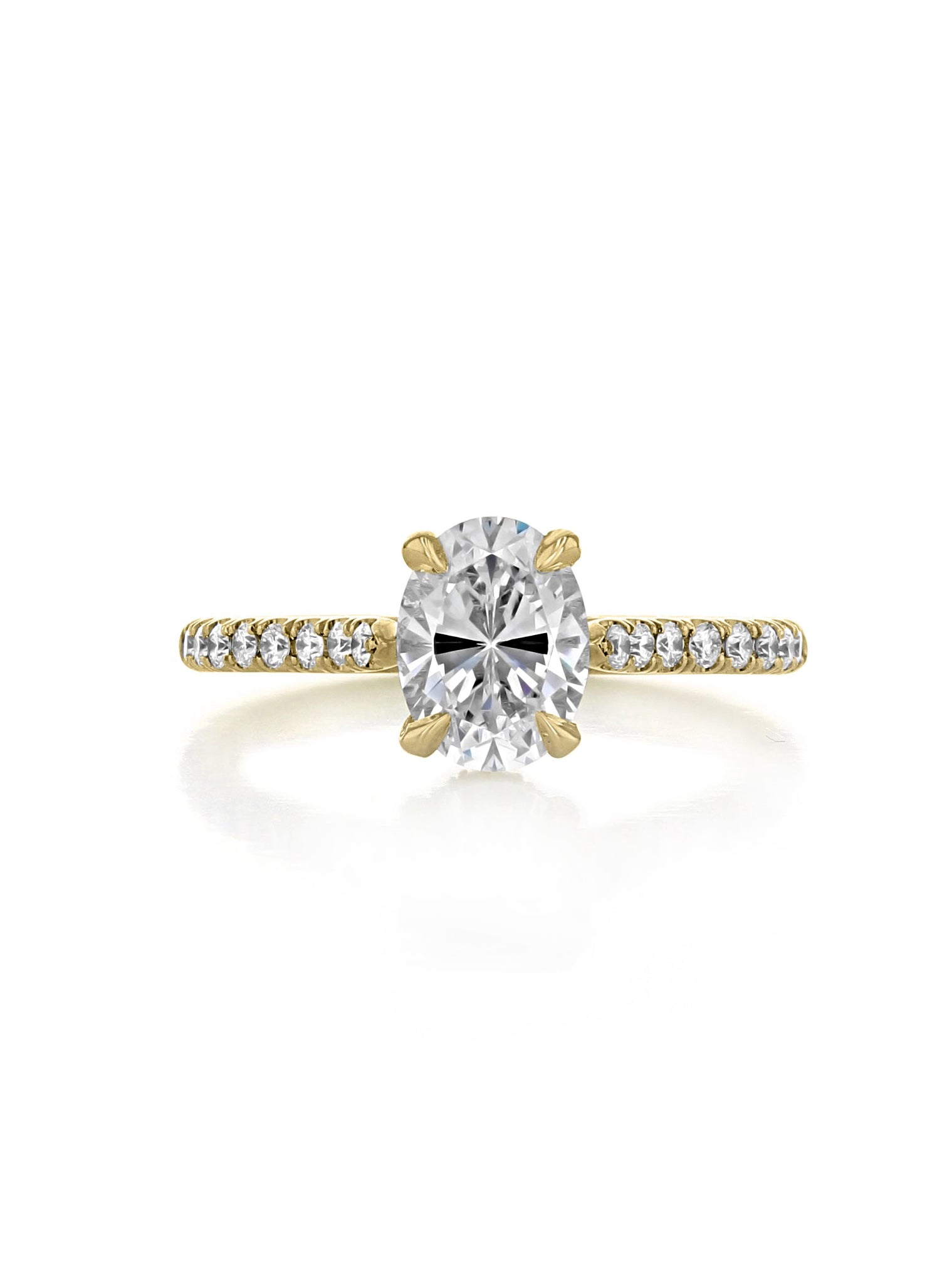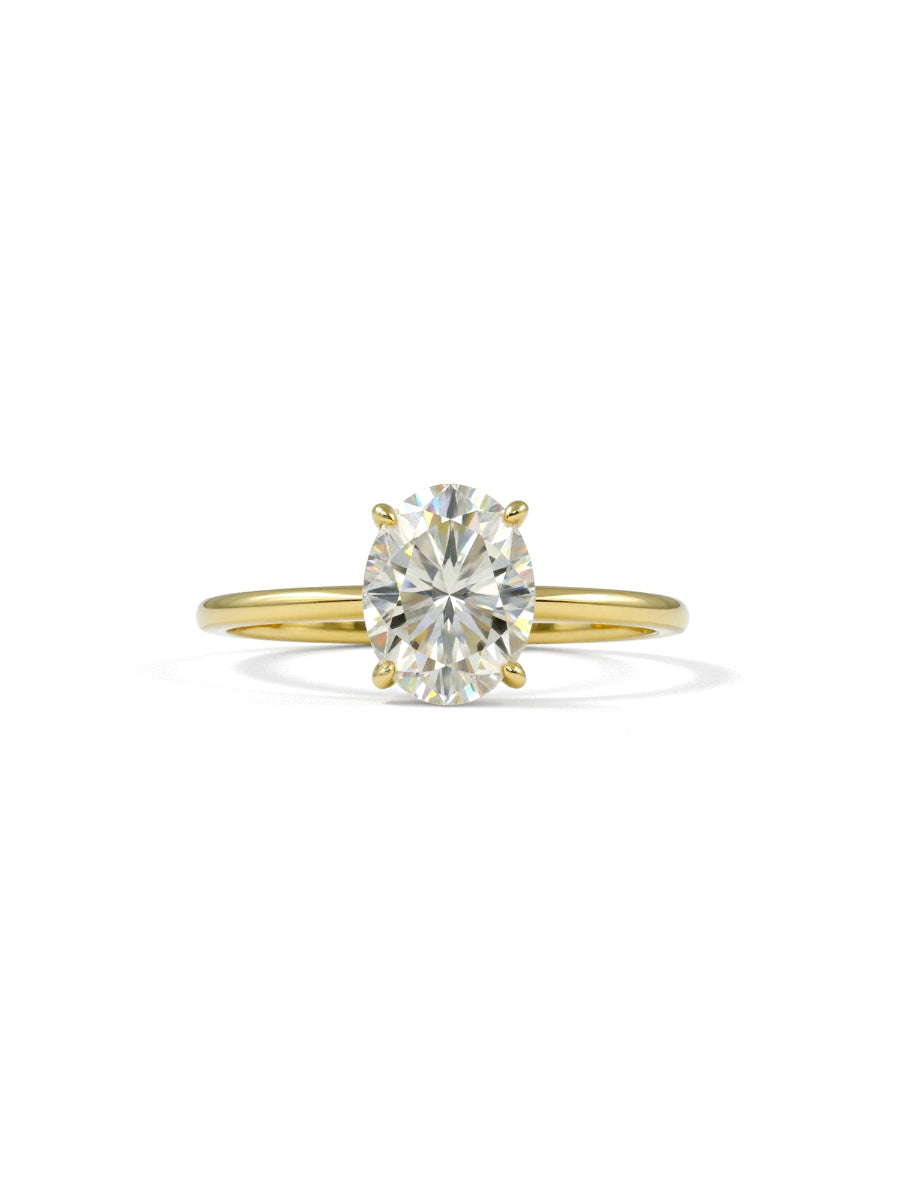
The Untold Story of Moissanite: A Meteorite's Journey to Luxury Jewelry
Introduction
Moissanite—often hailed as a brilliant "diamond alternative"—has captivated jewelry enthusiasts around the world. Known for its fire, brilliance, and affordability, it has become a popular choice in engagement rings, earrings, and necklaces. But few know the fascinating journey that Moissanite has taken from the heart of a meteorite to its place in luxury jewelry. This story begins not in a jewelry workshop or laboratory, but in the depths of space. In this article, we will explore how Moissanite was first discovered in a meteorite, its journey through science and technology, and how it emerged as a sought-after gemstone in today’s fine jewelry market.
The Discovery of Moissanite: A Celestial Find
In 1893, French chemist Henri Moissan made a discovery that would change the world of gemstones forever. While examining the Canyon Diablo meteorite, which had crashed to Earth in Arizona, Moissan found a strange substance that resembled diamond. At first, he couldn’t identify the material. Its brilliance was dazzling, and he believed it to be a form of diamond. After conducting extensive scientific analysis, Moissan determined that the substance was actually a completely new mineral, which he named Moissanite, in honor of his groundbreaking discovery.

The Canyon Diablo meteorite had been rich in a rare mineral called silicon carbide, which was the primary component of the newly discovered Moissanite. While diamonds are made from pure carbon, silicon carbide has unique properties that give Moissanite its incredible sparkle and fire—properties that make it one of the most brilliant gemstones in existence.
From Meteorite to Earth: The Rarity of Natural Moissanite
Despite the discovery of Moissanite in a meteorite, the mineral is extremely rare in nature. It occurs in small amounts in meteorites and is almost never found in the Earth’s crust. As a result, natural Moissanite is incredibly scarce, which made it impractical for use in jewelry during Moissan’s time.
For decades after its discovery, Moissanite remained a scientific curiosity rather than a gem used in the creation of fine jewelry. The tiny traces of Moissanite found in meteorites were simply not abundant enough to be cut and polished into gemstones. It would take nearly a century before technology advanced enough to synthesize Moissanite on Earth, making it accessible to the public.
The Lab-Grown Revolution: Moissanite’s Modern Journey
In the late 20th century, advances in technology allowed scientists to replicate the conditions necessary for producing Moissanite in a laboratory setting. Using high-pressure, high-temperature (HPHT) methods, researchers were able to create synthetic Moissanite crystals that were virtually identical to the rare natural material. These lab-grown stones were much more consistent in quality, available in larger sizes, and most importantly—affordable.
The introduction of synthetic Moissanite revolutionized the gemstone market. It was marketed as a diamond alternative—a stunningly beautiful stone that offered the same fire and brilliance as diamonds but at a fraction of the price. As the process for creating Moissanite became more refined, companies began to mass-produce high-quality jewelry, making Moissanite accessible to consumers around the world.

Moissanite vs. Diamond: The Appeal of a "Diamond Alternative"
One of the key reasons why Moissanite has become so popular is its striking similarity to diamonds. While diamonds have long been the symbol of luxury and elegance, Moissanite offers an alternative that rivals diamonds in brilliance and sparkle. The difference lies in the refractive index—a measure of how much light is bent as it passes through a gemstone. Moissanite has a higher refractive index than diamonds, meaning it reflects more light, resulting in a gemstone that sparkles more intensely.
Additionally, Moissanite exhibits fire, which is the dispersion of light into its spectral colors. Moissanite has a greater dispersion than diamonds, giving it a rainbow-like flash that diamonds don’t possess. While diamonds are celebrated for their elegance and timeless appeal, Moissanite's extra fire and brilliance offer a more dazzling effect, making it a popular choice for those looking for a gemstone with extra sparkle.
Moissanite’s Impact on the Jewelry Industry
Moissanite’s emergence as a diamond alternative has had a significant impact on the jewelry industry. It has provided consumers with a stunning, ethical, and affordable option for engagement rings and fine jewelry. Over the years, many top jewelers have embraced Moissanite in their collections, offering consumers a wide range of jewelry designs featuring this brilliant stone.
Celebrities and influencers have also played a role in boosting the popularity of Moissanite. In recent years, several public figures have chosen Moissanite for their engagement rings, helping to elevate the gemstone’s status and prove that it can be just as glamorous as a diamond.
Perhaps one of the most important factors driving Moissanite’s popularity is its ethical appeal. Unlike diamonds, which can sometimes be associated with conflict mining, Moissanite is produced in a laboratory under controlled conditions, making it a more ethical choice for consumers who want a gemstone that aligns with their values.
The Future of Moissanite in Luxury Jewelry
The future of Moissanite in the jewelry industry looks incredibly bright. As the technology behind lab-grown Moissanite continues to evolve, the gemstone is expected to become even more affordable and accessible. Moissanite is likely to become even more popular as consumers continue to seek out sustainable, ethical, and affordable alternatives to diamonds.

Innovations in Moissanite technology are also likely to improve the durability and quality of the stones, further enhancing their appeal. As the demand for ethically sourced and eco-friendly jewelry grows, Moissanite will continue to play a key role in shaping the future of the luxury jewelry market.
Conclusion
The story of Moissanite is one of scientific discovery, technological innovation, and a changing landscape in the jewelry industry. From its celestial origins in a meteorite to its rise as a beloved gemstone, Moissanite has carved out a place for itself as a stunning alternative to diamonds. Its brilliant sparkle, ethical sourcing, and affordability make it an attractive choice for those seeking luxury jewelry that doesn’t come with a hefty price tag.
As more consumers turn to Moissanite for engagement rings, wedding bands, and other fine jewelry, its place in the jewelry market is set to expand. With its rich history, dazzling appearance, and sustainable production, Moissanite is poised to continue dazzling jewelry lovers for generations to come.


















